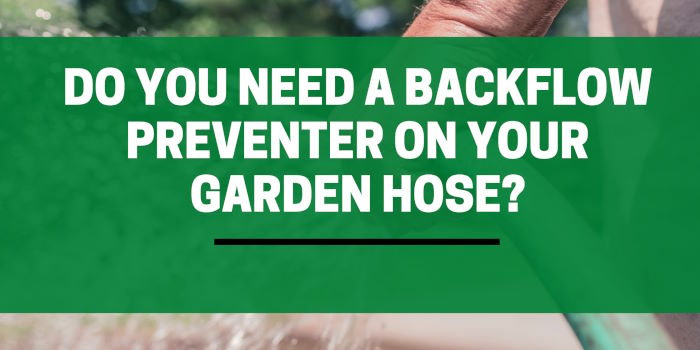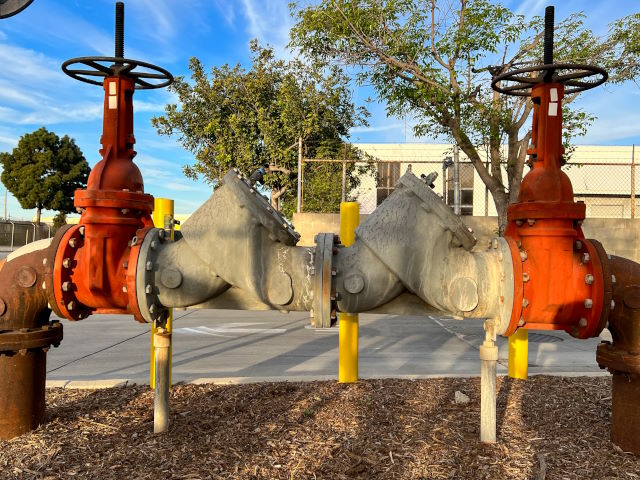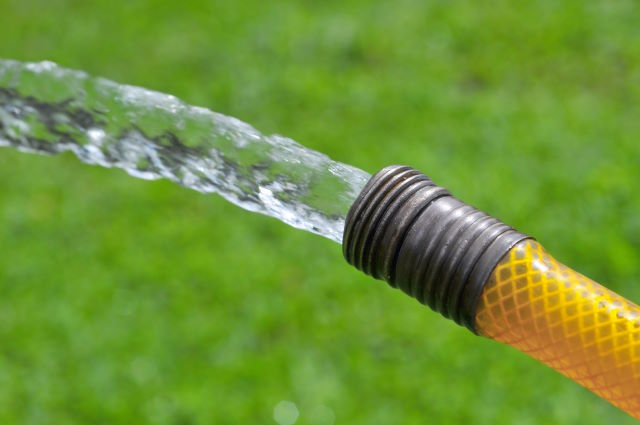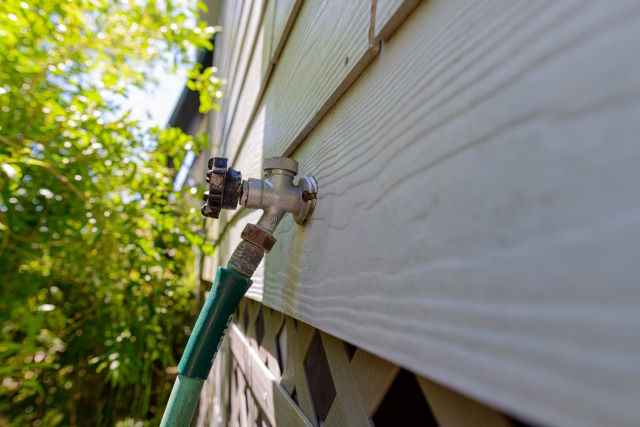
Backflow preventers might seem like inconspicuous devices, often located on outdoor faucets or at the ends of garden hose spigots.
But are they really crucial for your garden hose or irrigation system?
In this in-depth exploration, we’ll unveil the significance of backflow preventer devices and why they’re indispensable for ensuring the purity of our water supply.
Contents
Do You Need A Backflow Preventer?
The answer is usually yes!

Hose backflow preventers are crucial attachments found on outdoor faucets and hose spigots. These devices play a pivotal role in ensuring that the water in your garden hose doesn’t mix with the clean drinking water supply, thereby safeguarding against cross-contamination.
Why Does Backflow Occur?
Backflow refers to the undesired reversal of water flow from the garden hose into your home and the municipal water supply. A sudden drop in the water pressure in the city water system can trigger this event. Factors such as fire trucks using hydrants, plumbing system leaks, or system pump failures can be culprits behind these pressure drops.
Furthermore, if a hose is left attached to a hose bib with the valve closed at its end, the pressure within can increase, especially under the sun. This phenomenon might lead to backflow even if there’s no notable drop in the overall water system pressure.
The Functionality Of A Backflow Preventer
Due to varying water pressure in water mains, water from building systems can flow back into your home, into the broader municipal water supply, or into your water well.
Such events risk introducing harmful contaminants like human waste, nasty chemicals, bacteria, pesticides, or other impurities into the drinking water systems.

Backflow preventer devices are the protective shield in such scenarios. Not only do they guarantee that your household drinking water remains pure, clean, and devoid of contaminants, but they also fortify the plumbing system against impurities, enhancing the longevity of water pipes.
It is recommended to use a backflow preventer on your garden hose if you are using it with chemicals, fertilizers, or pesticides.
Installation of a device is generally simple without the need for a plumber.
Equipping your hose bibs or outdoor faucet with a backflow preventer ensures your peace of mind regarding clean water, eliminating concerns about contaminated water supply or costly repairs.
Understanding Backflow Prevention Types
Backflow preventers, given their importance, come in various forms, each tailored for specific requirements:
- Atmospheric Vacuum Breaker Assembly (AVB): This non-pressure type vacuum breaker is characterized by its air inlet valve and port. This assembly shouldn’t remain under pressure for over 12 hours within a 24-hour window.
- Pressure Vacuum Breaker Assembly (PVB): A unique component that consists of an independently operated check valve, essential for ensuring consistent water pressure in different circumstances. This is very similar to an AVB but contains a spring-loaded poppet making it suitable for high-hazard pressure applications.
- Hose Bib Vacuum Breaker: This simple device, costing merely $5-$20, is an indispensable tool in many plumbing setups adhering to current plumbing code requirements. It prevents backflow by venting to the atmosphere if there’s a pressure reversal.
- Air Gap: Serving as a barrier, this prevents the mixing of water from different sources. It’s vital to ensure the “allowed air gap” is maintained correctly for effective prevention.
- Double Check Valve Assembly (DCA): With two independent check valves, this assembly ensures that the water flows in the intended direction, offering another layer of protection against backflow.
- Reduced Pressure Zone Device (RPZD): This device is renowned for its intricate design and undeniable reliability. While there may be several devices in the market, when it comes to ensuring utmost safety and efficiency, the Reduced Pressure Zone Device takes center stage.
Incorporating Backflow Prevention On Your Hose
With myriad options like simple vacuum breakers, integral vacuum breakers, and more, homeowners must consult with professionals to choose the right backflow protection device, especially considering hose faucets, garden hose connection specifics, and garden hose threads.

Furthermore, devices like hose bib vacuum breakers can safeguard against microbiological contamination events and ensure that bodies of water like sprinkler valves or water valves connected to a couple of garden hoses remain uncontaminated.
Across numerous localities in the U.S., there’s a strong push to ensure that commercial plumbing systems undergo rigorous annual backflow preventer tests and maintenance.
Some local municipalities may require the use of backflow preventers on garden hoses to comply with regulations and ensure safe water usage.
But why does this matter?
In areas where residential backflow preventer installations are required, these annual evaluations become essential. The primary goal is to safeguard the water quality for residents and ensure that there’s no cross-contamination between potable and non-potable water sources.
Whether it’s chlorinated water from a pool or water from other sources, the protection of the potable water supply is paramount.
Final Thoughts
A backflow preventer is not just a simple device; it’s an essential tool that guarantees the safety and purity of our drinking water supply. From exterior faucets to city water systems, having a robust backflow prevention mechanism is pivotal.
Don’t compromise on clean drinking water; ensure your outdoor garden hose and other water outlets are equipped with the best backflow prevention devices.
